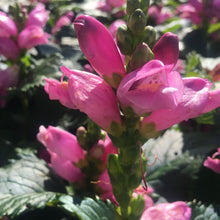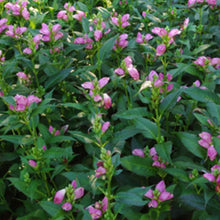Chelone 'Hot Lips', commonly known as turtlehead, is a bold upright perennial valued for its rosy pink snapdragon like blooms that appear in late summer when many other plants are fading.
Height & Spread: 2 - 3 ft x 1.5 - 2 ft
Bloom Time: Late summer to early fall
Light Requirements: Full sun to part shade
Soil Preference: Moist, rich, well drained soils
Watering Needs: Moderate to high; prefers consistent moisture
Deer Resistance: Moderate
NATIVE STATUS
Cultivar of Chelone lyonii which is native to North America, particularly the eastern United States, making it an excellent fit for native and wildlife focused gardens.
WILDLIFE & INSECTS
Bees
-
Especially attractive to bumblebees.
Butterflies
-
Late season nectar source for migrating butterflies such as monarchs and red admirals.
Hummingbirds
-
Drawn to the tubular shape and vibrant pink flowers, especially when planted in masses.
Beneficial Insects
-
Supports a variety of beneficial predatory and parasitic insects that thrive in moist layered planting schemes.
SPACING & LANDSCAPE USE
Spacing Recommendations
-
Plant 18 - 24 in apart for full clumps with air circulation and even coverage.
Landscape Placement
- Excellent for rain gardens, moist borders, woodland edges, or beside streams and ponds. Pairs well with finer foliage for contrast and shines when planted in groups for visual impact and pollinator attraction.
COMPANION PLANTS
-
Physostegia virginiana (Obedient Plant) - Both thrive in moist soils and offer complementary pink blooms in late summer.
-
Actaea racemosa (Black Cohosh) - Adds height, texture, and late season drama to shaded or moist borders.
-
Carex pensylvanica (Pennsylvania Sedge) - Provides a soft textured groundcover at the base of taller Chelone stands.
-
Lobelia cardinalis (Cardinal Flower) - Shares a love for moisture and attracts hummingbirds with vivid red spikes.
-
Aster novae-angliae (New England Aster) - Extends the bloom season and supports migrating butterflies alongside Chelone.



